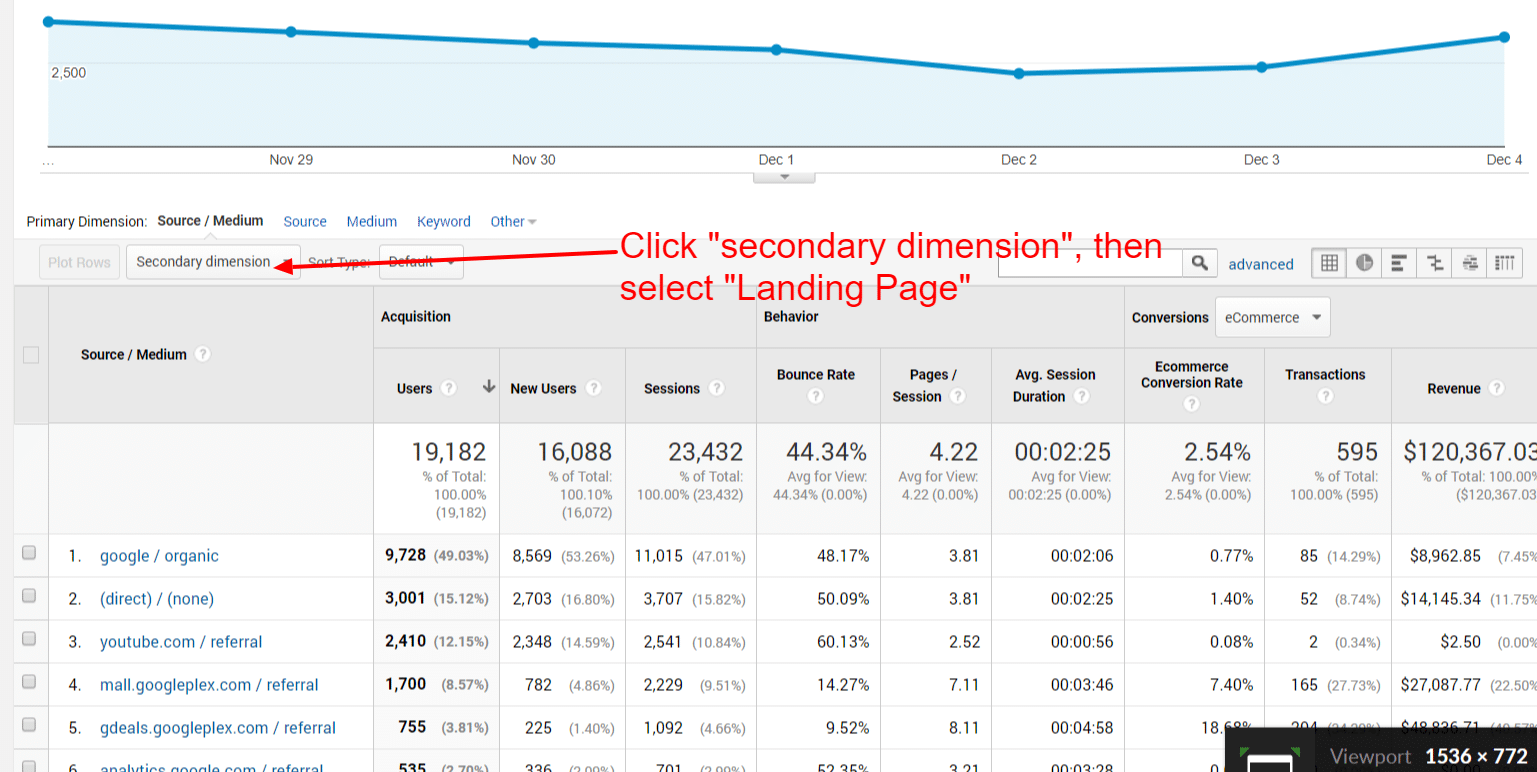Secondary Dimension in Google Analytics: Unlocking Advanced Metrics
Secondary Dimension in Google Analytics: Unlocking Advanced Metrics
Blog Article
Enhance Your Data Evaluation Making Use Of Secondary Measurement in Google Analytics
Checking out the capacities of additional measurements in Google Analytics opens a realm of possibilities for refining information evaluation. The capability to study info even more past the surface area level presents a nuanced sight that can form tactical decisions. By layering added dimensions onto key information collections, a more detailed narrative arises, clarifying individual communications and performance signs. This vibrant strategy to information assessment holds the vital to unlocking hidden patterns and fads that might transform just how organizations interpret their digital impact.
Recognizing Additional Measurements
In the realm of information analysis, an important aspect to grasp is the principle of additional dimensions and their value in removing deeper understandings from Google Analytics records. Second measurements in Google Analytics describe additional specifications that can be contributed to the key dimension, enabling a more detailed evaluation of information. By including secondary dimensions, experts can sector and filter information to discover patterns, fads, and relationships that might not appear when looking at the data as a whole. These second measurements can offer context and a much more detailed understanding of individual behavior, website traffic resources, and other vital metrics tracked by Google Analytics.

Benefits of Utilizing Second Measurements
When examining data in Google Analytics, the usage of secondary dimensions supplies very useful understandings right into user behavior and efficiency metrics. By adding a secondary measurement to your primary information, you can dig much deeper right into the attributes of your internet site site visitors and their communications. Among the key benefits of using second dimensions is the capability to segment and compare data a lot more effectively. This segmentation permits you to recognize exactly how different variables, such as demographics or traffic resources, impact individual habits and conversions (Secondary Dimension in Google Analytics).
Moreover, secondary measurements assist in recognizing patterns and relationships that might not be promptly evident when taking a look at the data alone. This much deeper level of evaluation can reveal useful details that can guide advertising methods, internet site optimization, and general business choices. Additionally, additional measurements improve the context of your key information, providing a more extensive view of user involvement and efficiency metrics. On the whole, making use go right here of second measurements in Google Analytics can considerably boost the deepness and quality of your data analysis, bring about more enlightened decision-making and improved results.
Exactly How to Add Additional Dimensions
By integrating second dimensions in Google Analytics, customers can acquire deeper understandings into their data analysis process, allowing for more comprehensive analysis of customer habits and performance metrics. Including secondary dimensions is a simple process that can significantly enhance the deepness of evaluation. As soon as in the report, locate the "Second measurement" tab above the information table.
Studying Data With Secondary Dimensions
Utilizing secondary measurements in information evaluation provides a much more detailed understanding of customer habits and efficiency metrics. By adding a second measurement to your key data embeded in Google Analytics, you can dig deeper right into the attributes of your web site visitors and their interactions. Integrating the main dimension of 'source/medium' with the additional dimension of 'landing web page' can disclose which particular pages are attracting web traffic from various resources, assisting you maximize these web pages for far better engagement.

Basically, assessing data with secondary measurements encourages you to gain useful understandings right into individual behavior, recognize patterns, and make informed choices to enhance the performance of your electronic properties.
Ideal Practices for Second Measurements
In information evaluation, integrating secondary measurements properly can considerably boost the depth of understandings acquired from metrics and customer visit behavior patterns. When making use of second dimensions in Google Analytics or any type of other analytical device, it is vital to stick to best methods to ensure the precision and importance of the information evaluation.
One key finest technique is to thoroughly select additional measurements that match the primary measurement being evaluated. Picking second measurements that supply added context or further division can provide an extra thorough understanding of the data. It is likewise check out this site important to avoid overcomplicating the evaluation by consisting of too many additional dimensions, which may lead to confusion or dilution of understandings.
In addition, it is a good idea to explore various combinations of second and key dimensions to uncover new relationships and patterns. Routinely fine-tuning the selection and evaluating of second measurements based on the specific goals of the analysis can cause more actionable insights. By adhering to these best methods, data experts can leverage secondary dimensions successfully to improve the general data evaluation procedure and decision-making abilities.

Verdict
Finally, integrating additional measurements in Google Analytics is important for a comprehensive data analysis method. By leveraging secondary measurements together with primary ones, marketers and experts can reveal useful insights and relationships that can educate decision-making and optimize electronic marketing techniques. Recognizing exactly how to efficiently make use of secondary dimensions and adhering to ideal methods will allow professionals to extract purposeful data and improve their total performance metrics.
Additional measurements in Google Analytics refer to additional specifications that can be added to the main measurement, allowing for a much more thorough evaluation of information. By integrating secondary dimensions, experts can segment and filter data to discover patterns, patterns, and relationships that may not be apparent when looking at the data as a whole. Integrating the primary dimension of 'source/medium' with the secondary dimension of 'landing page' can reveal which particular pages are bring in website traffic from different sources, aiding you optimize these pages for far better engagement.
One trick ideal technique is to thoroughly pick secondary dimensions that complement the main dimension being analyzed. By adhering to these best practices, information experts can utilize additional measurements properly to improve the total data analysis process and decision-making capabilities.
Report this page